Producing Sparkling Dry Mead at Heidrun Meadery in Point Reyes, California
West Marin idyllic cape is home to sweeping views of the national seashore, artisanal foods makers and this award-winning meadery

For Gordun Hull, a honey fermentation experiment led him down the unexpected path to opening Heidrun Meadery. Hull, who formerly worked as a beer brewer, crafts sparkling dry meads from a variety of single-blossom varietals as well as multi-floral version that reveal the terroir of the region where the honey is from. From their Orange and Sage Blossom liquid to their delectable Point Reyes Wildflower Estate, Heidrun meads taste more like champagne than the sweet honey wines you might find being served at a Renaissance faire.

After tasting several of these meads—fermented alcoholic beverages made from honey and water—by Heidrun at the Cheesemaker Reception (hosted by Cowgirl Creamery during the Winter Fancy Food Show weekend in San Francisco earlier this year), we spent time learning about the history of Heidrun, the mead-making process and what is coming up for their releases this fall.

A few decades ago, back when he began exploring the fermentation process from a commercial brewery in Humboldt County, Hull did not enjoy the sweet meads he tasted. That motivated him to learn how to make his own dry sparkling version. With one gallon of apple and blackberry honey, he made his first batch, and three months later, he happily discovered it was clean, dry and effervescent. From then onward, his goal became to bring mead culture into restaurants to appeal to wine and champagne enthusiasts and to develop an audience for a 21st century mead.
Hull named his company after the Norse god Odin’s mead-bearing goat and after a few years of working from his garage, Hull moved the operation into an incubator space in Arcata. While producing, he would bring bottles to SF for appointments at restaurants with wine directors. His first restaurant placement was at Green’s Restaurant in 1998, and later the iconic Chez Panisse put some Heidrun on their wine list.
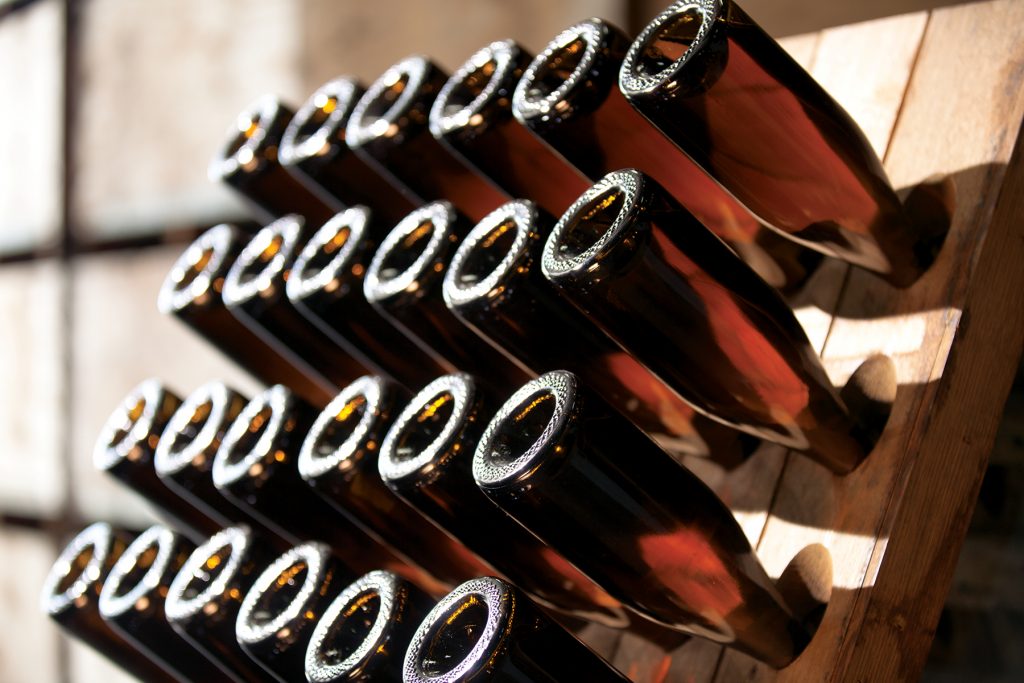
Still, Hull wanted to improve and learn more. Inside the wine section of the Sonoma public library, he studied how to transition to méthode champenoise—wherein the secondary fermentation takes place in the bottle. Along with his wife, Jeffra, Hull then began to explore properties with beekeeping operations. Their search led them to West Marin where they found a dairy farm for sale in Point Reyes that would provide everything they needed for a full working meadery.
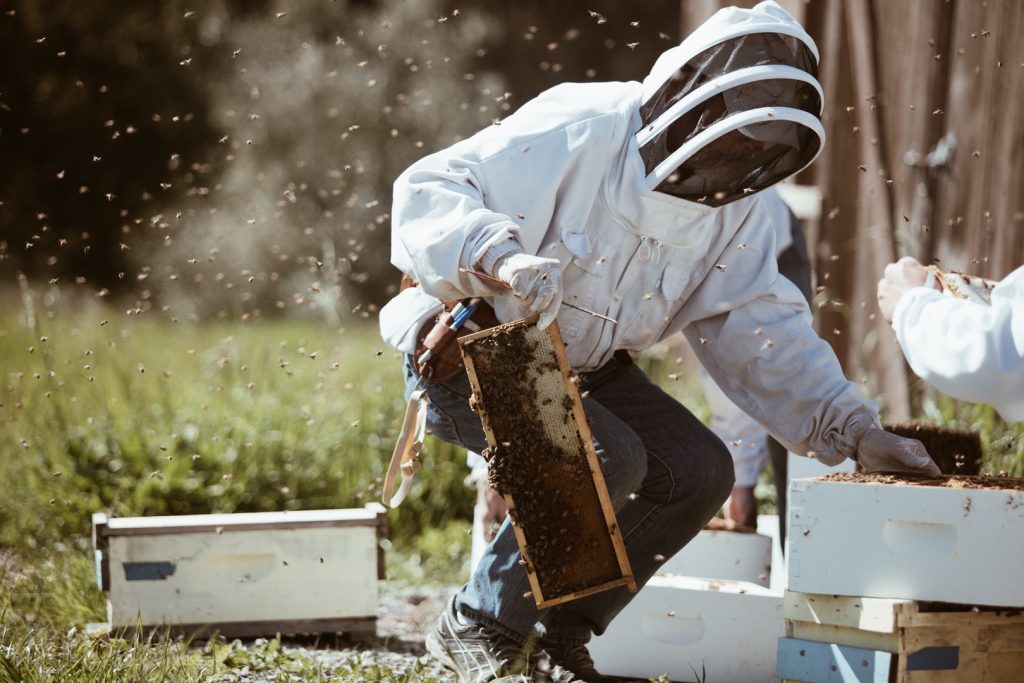
Hull took beekeeping classes through the Marin Beekeeper’s Association and at Beekind in Sebastopol. The first few challenging years were a lot of trial and error. Then Hull reached out to beekeepers Bonnie and Gary Morse of Bonnie Bee & Company, who were working to improve the health of bees in Marin. “They have now been taking care of our bees for five years. We now have nine of our own apiaries in Marin,” Hull says.
On their 13-acre Point Reyes property, Hull transformed the loafing barn into a greenhouse-style tasting room filled with flowers and plants. A grassy field that was once for the cows is now being solarized to make way for a meadow of wild flowers for their bees.
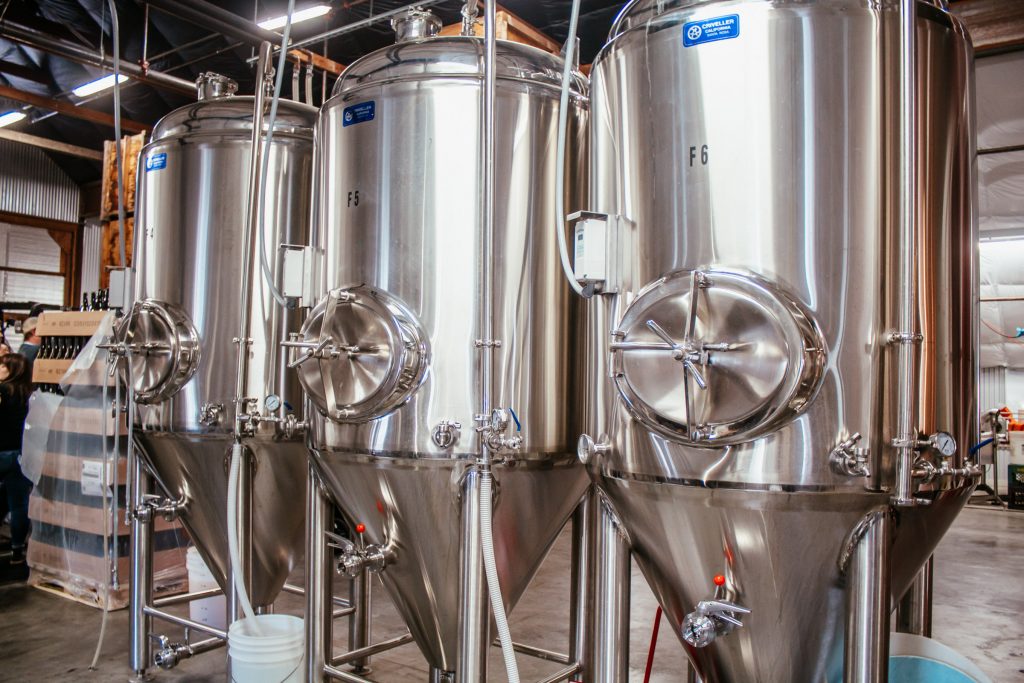
Heidrun does not change their process from one mead to another, despite the vast differences in honeys they use. “What we are doing is revealing to our visitors and customers how extraordinarily different every honey varietal is and how that expresses itself in our wine,” says Hull.

Similar to winemaking, “in addition to the element of the species of flower, there is also a clear sense of terroir for honeys,” Hull continues. “The honey from the Sonoma Mountains is different than in Point Reyes. From the soil to the climate, even the beekeepers techniques, are reflected in the variations.”
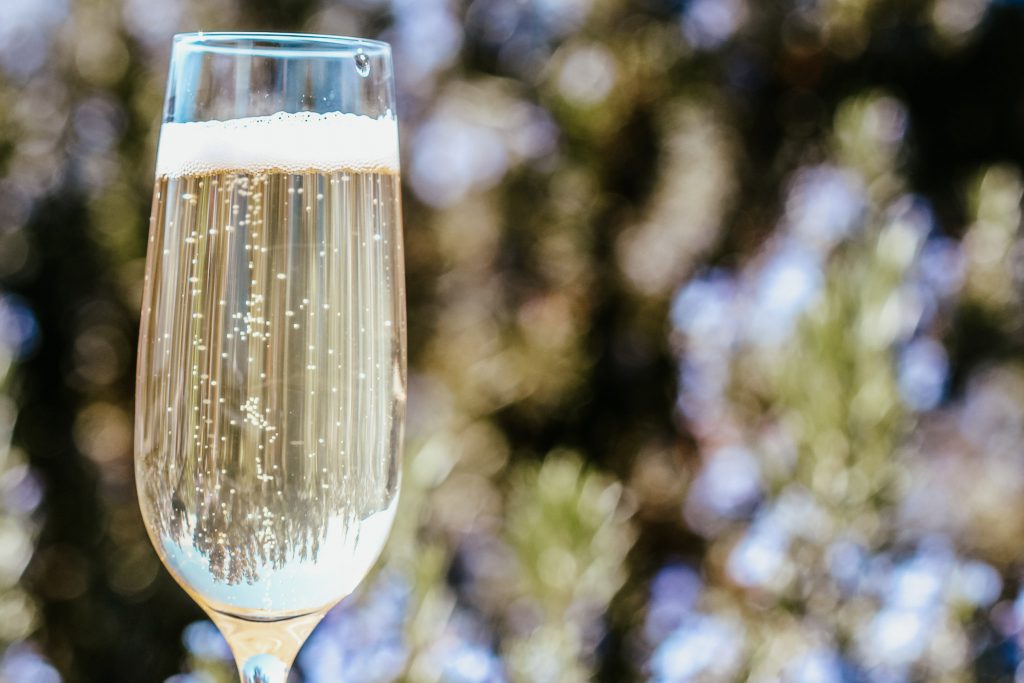
Hull makes their carrot blossom varietal from a madras carrot honey that he bought from a beekeeper in Oregon’s Willamette Valley that has a strong vegetative flavor. “The mead we produced from that tastes very rich like incense and sandalwood,” says Hull. “It tastes like a Belgian Saison.” Hull especially loves the mead they made with Lehua Blossom honey from the Big Island of Hawaii. He feels the champagne-like dryness in the Lehua Blossom pairs well with raw oysters and sushi, while their Orange Blossom matches nicely with Indian food.
Their farm manager previously worked with the nearby Cowgirl Creamery and likes to plan mead pairings with cheese. “The unexpected gift of moving to Point Reyes was how well we fit into the local culinary world of cheese makers, oyster farmers and the fresh seafood. There is a synergy here between all of us working together,” says Hull. “It is fun to collaborate.”
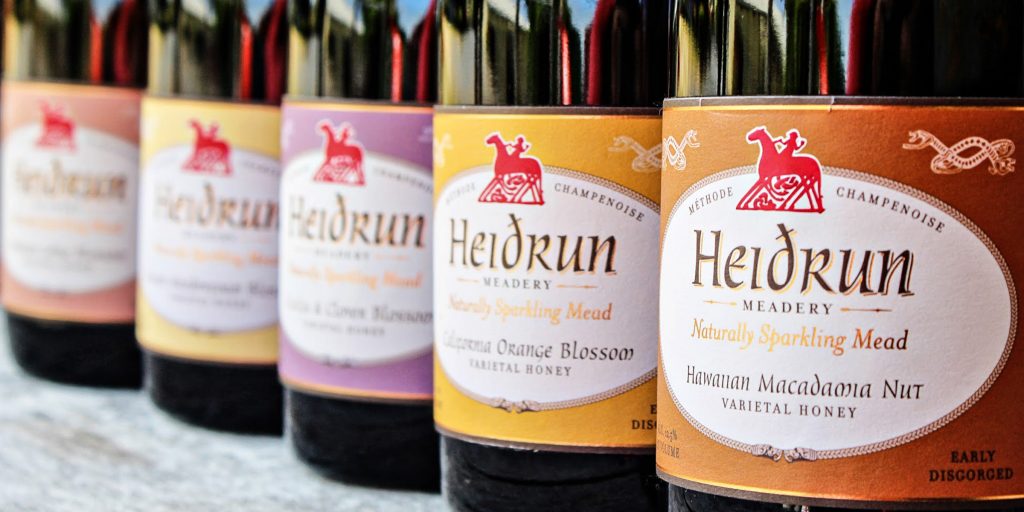
A friend of Hull’s keeps hives on his rooftop in San Francisco’s Western Addition neighborhood and their honey led to another liquid. “It’s a flavor of that botanical terroir there in SF, our first urban honey,” Hull says as he describes this varietal as lightly effervescent with flavor notes that evoke a German Riesling.
This fall, Hull and the Heidrun team are looking forward to releasing a new pumpkin blossom varietal made with honey from Oregon.

Transforming the best honeys from their own land and all around the world into mead continues to inspire everyone at Heidrun. “We are starting to work with honey from other continents and with organizations that are promoting beekeeping in forests in South America and Africa,” says Hull. Their goal is to help keep these forests alive though agricultural practices that encourage conservation. Increasing the demand for honey to make mead does have a benefit ecologically. Mead consumption promotes beekeeping, which benefits the environment.

“Our bees are our workers,” Hull adds. “The world of flowers is our source. Whether they are collecting the nectar of the crops that grow our food or the flowers of our neighboring gardens, the bees are vital to sustaining life. We benefit from the delicious varieties of honey they create. We strive to highlight the importance of their sources and the need to preserve them.”
Until their tours and tasting room reopen, Heidrun meads are available on their website and from K&L and Whole Foods Markets throughout California.
Images courtesy of Heidrun Meadery












